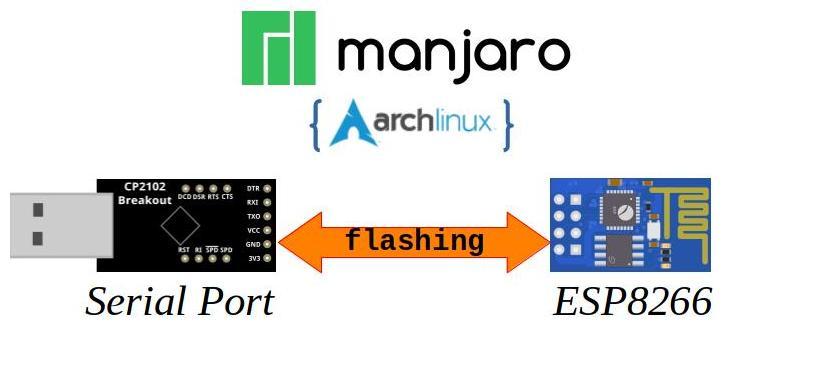

- #CHECKING ESP8266 FIRMWARE HOW TO#
- #CHECKING ESP8266 FIRMWARE INSTALL#
- #CHECKING ESP8266 FIRMWARE SERIAL#
- #CHECKING ESP8266 FIRMWARE SOFTWARE#
- #CHECKING ESP8266 FIRMWARE DOWNLOAD#
Try the procedure mentioned in this project first and if you succeed, you can try installing other ESP8266 Firmware. There are other firmware versions for ESP8266 Module.
#CHECKING ESP8266 FIRMWARE DOWNLOAD#
In order to download the AT Commands Firmware for ESP8266, visit the official link here or directly download from this link. Now since I will be using only the AT Command Set of the ESP8266, I will download only the Bin Files associated with the AT Commands. The ESP8266 Firmware files are in the form of Binary Files i.e.bin files. I’ll be using the Non-OS SDK (well, technically, the Firmware files based on the Non-OS SDK). The RTOS SDK on the other hand is based on FreeRTOS. Using this SDK, you can compile IOT_Demo and AT Commands. The Non-OS SDK, as the name suggests, isn’t based on any OS.
#CHECKING ESP8266 FIRMWARE SOFTWARE#
There are two types of SDK or Software Development Kits for ESP8266: Non-OS SDK and RTOS SDK. NOTE: Make sure that GPIO0 Pin connected to GND before proceeding further. I will now replace this firmware with the Espressif Firmware (the manufacturer of ESP8266 SoC). The AT Command Set Version is 0.21.0.0 and the SDK Version is 0.9.5. If you notice, my firmware is by Ai-Thinker Technology, the manufacturer of my ESP8266 ESP-01 Module and it is pretty old one. All the AT Commands should be in Upper Case. This command will return the firmware version of the ESP8266 Module.

In order to check for the firmware version, you need to type the following AT Command and hit send.
#CHECKING ESP8266 FIRMWARE SERIAL#
The ESP8266 Module will reset and display “ready” after some garbage data on the serial monitor. After this press the RST Button of the ESP8266 for a second and release.

Set the baud rate to 115200 and select Both NL and CR option in the serial monitor. In Arduino IDE, select the correct COM Port and open the Serial Monitor. You can use any software like Putty, Terminal, etc. *IMPORTANT*.Īfter making the connections as per the circuit diagram given above (and disconnecting the GPIO0 from GND), plug-in the USB Cable of Arduino to the Computer and Open any Serial Monitor Software. For this, we need to disconnect the GPIO0 pin from GND. Even the RX Pin of ESP8266 is connected through a level converter.īefore installing the Firmware, we will first check the existing firmware in the ESP8266 Module using serial communication. in one position, the GPIO0 is connected to GND and in the other position, it is free to use as a GPIO. You can use a SPDT switch to achieve this action i.e. And after flashing the Firmware, I’ve disconnected it from GND. I’ve connected the GPIO0 Pin to GND directly.Before proceeding further, please refer the previous project for configuring Arduino IDE and getting the Arduino UNO ready for flashing the firmware.In order to put the ESP8266 SoC in Flashing Mode, the GPIO0 Pin must be connected to GND and a momentary GND Pulse on RST Pin.

The following image shows the circuit diagram for enabling the Flashing Mode in ESP8266.
#CHECKING ESP8266 FIRMWARE INSTALL#
The ESP8266 Firmware can be installed for two reasons: If you want to update the ESP8266 Firmware to its latest version or to completely install the new firmware (in case it was overwritten by any program). So, in this project, we will flash the official Espressif Systems’ firmware for ESP8266 Module using the official ESP8266 Flasher Tool provided by Espressif Systems which is the ESP8266 FLASH DOWNLOAD TOOL and Arduino UNO as the USB to Serial Interface. This leads to a lot of questions like whether the firmware is original or not, is the firmware up to date or not and many other. In my case, I have the ESP8266 ESP-01 Module by AI-Thinker. In the same project, I’ve mentioned that by default, the ESP8266 ESP-01 Module comes with an AT Command Firmware.īut if we write our own program to access the GPIO Pins (like we did in the previous project), the existing firmware will be completely erased and the new program will be written.Įven though ESP8266 WiFi Module is manufactured by Espressif Systems, the SoC is used by many third party manufacturers to implement their own custom modules.
#CHECKING ESP8266 FIRMWARE HOW TO#
In the previous ESP8266 Project, we have seen how to write our own program in ESP8266 using Arduino IDE and control an LED using the GPIO Pins.


 0 kommentar(er)
0 kommentar(er)
